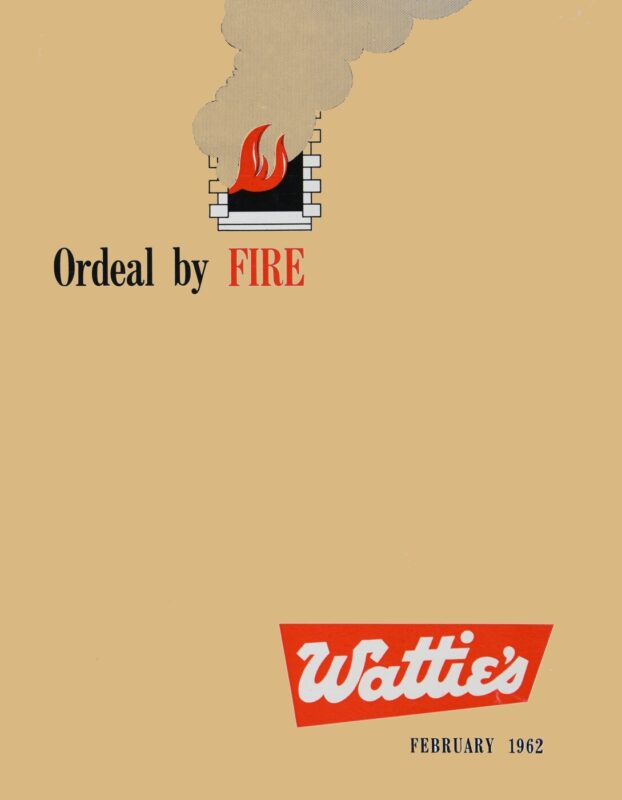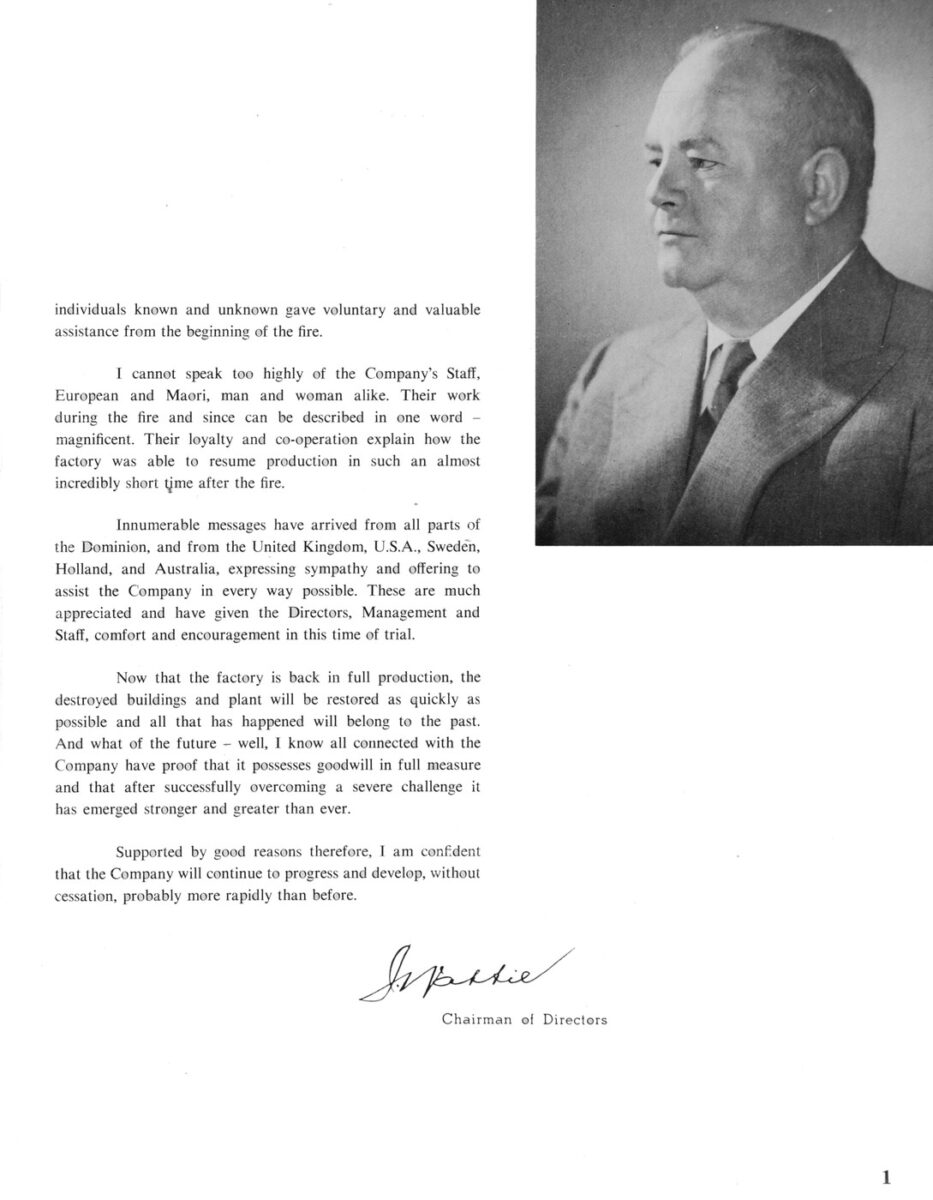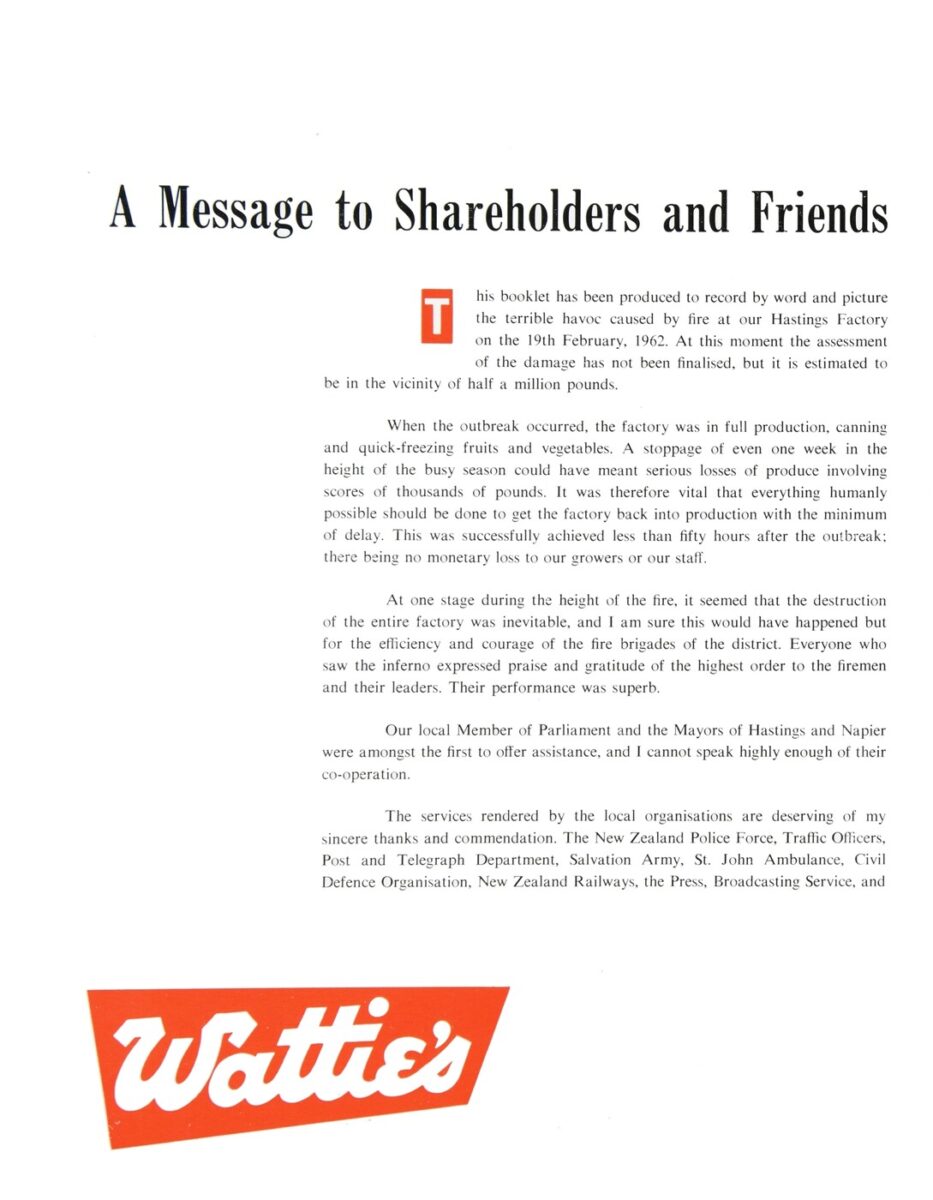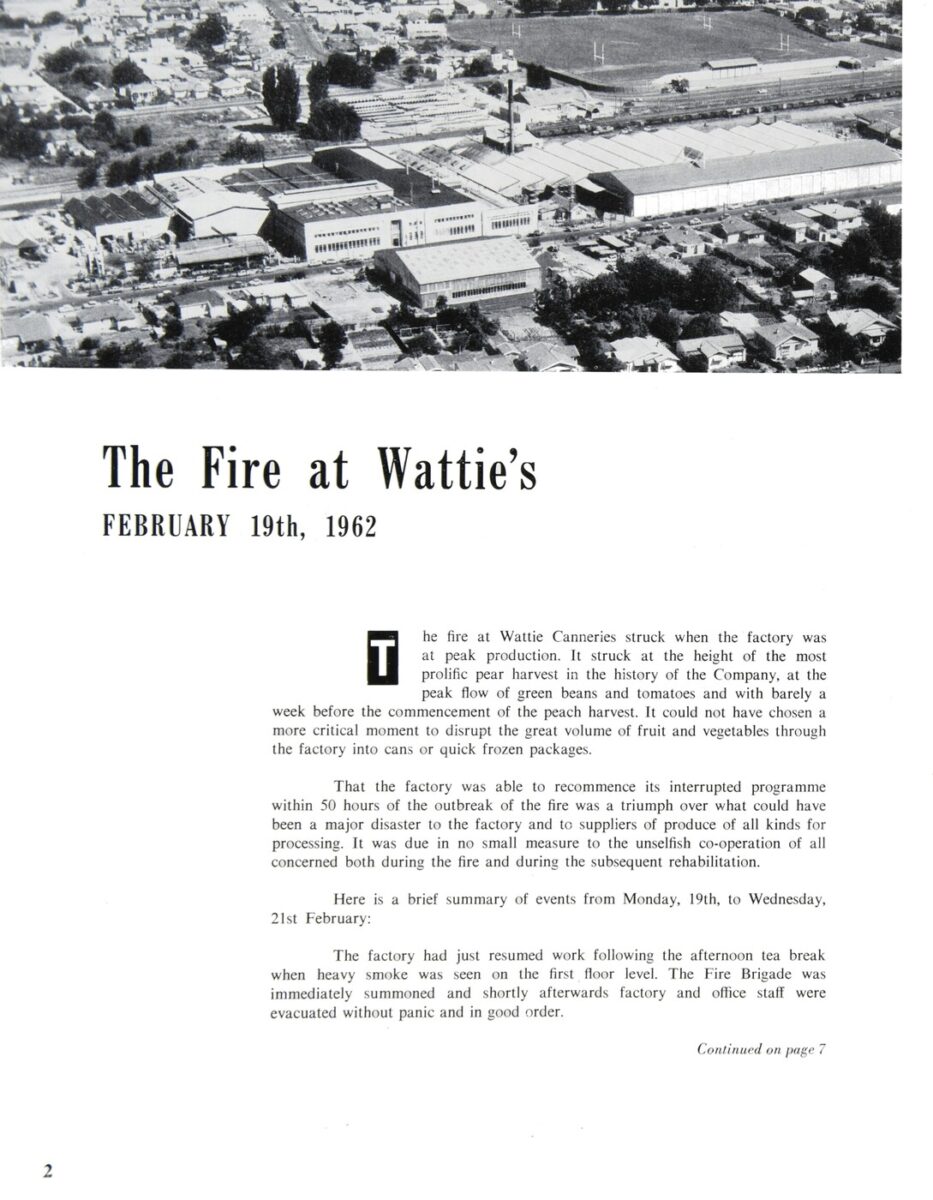Pages 4 and 5
Boiler Room
The biggest packaged units of their type in the Southern Hemisphere, consisting of two 400 h.p. and one 600 h.p. Cleaver Brook Boilers, also one Babcock Boiler. A touch-and-go save.
Compressed Air Plant
Modifications and extensions to this plant had been completed on the very morning of the outbreak. It was completely destroyed. Three 50 h.p. and one 40 h.p. motors driving four air compressors.
Millions and millions of empty Cans and Lids
This mountain of debris had to be moved before restoration operations could commence. While the fire was still raging, operators with front-end loaders began the mammoth task of clearing the still-smouldering mass. Hoses were used to quell the still burning debris in the loaded trucks before leaving the factory gates.
Beer Cannister Lacquering Plant
The only one in New Zealand and one of the very few in the Southern Hemisphere. It had been in operation barely six months before it was totally destroyed. It was valued at £40,000.
Laboratory
Nothing was salvaged from the entire stock of equipment, valuable instruments and materials. Urgency was accorded and within days, certain vital requirements reached Wattie’s from England, France, and Australia.
Automatic Labellers
An installation of modern machines for labelling cans, packing and sealing cartons automatically.
Quick Freeze Free Flow Tunnel
One of the show pieces of Wattie’s, valued at £75,000. It was designed in U.S.A. especially for this factory. The blast freeze tunnel was 100 ft. long and the moving belts 8 ft. wide. It required equipment of 800 h.p. to operate at zero temperature.
De-palletiser and Conveyor System for Unfilled Cans
This was the main supply line for empty cans to the factory. From this point, cans of varying sizes were delivered to any point of the processing department.
No. 1 Zero Chamber
Nothing was salvaged from this low-temperature store for holding frozen foods. Fortunately our other and much larger stores escaped damage.






















Do you know something about this record?
Please note we cannot verify the accuracy of any information posted by the community.